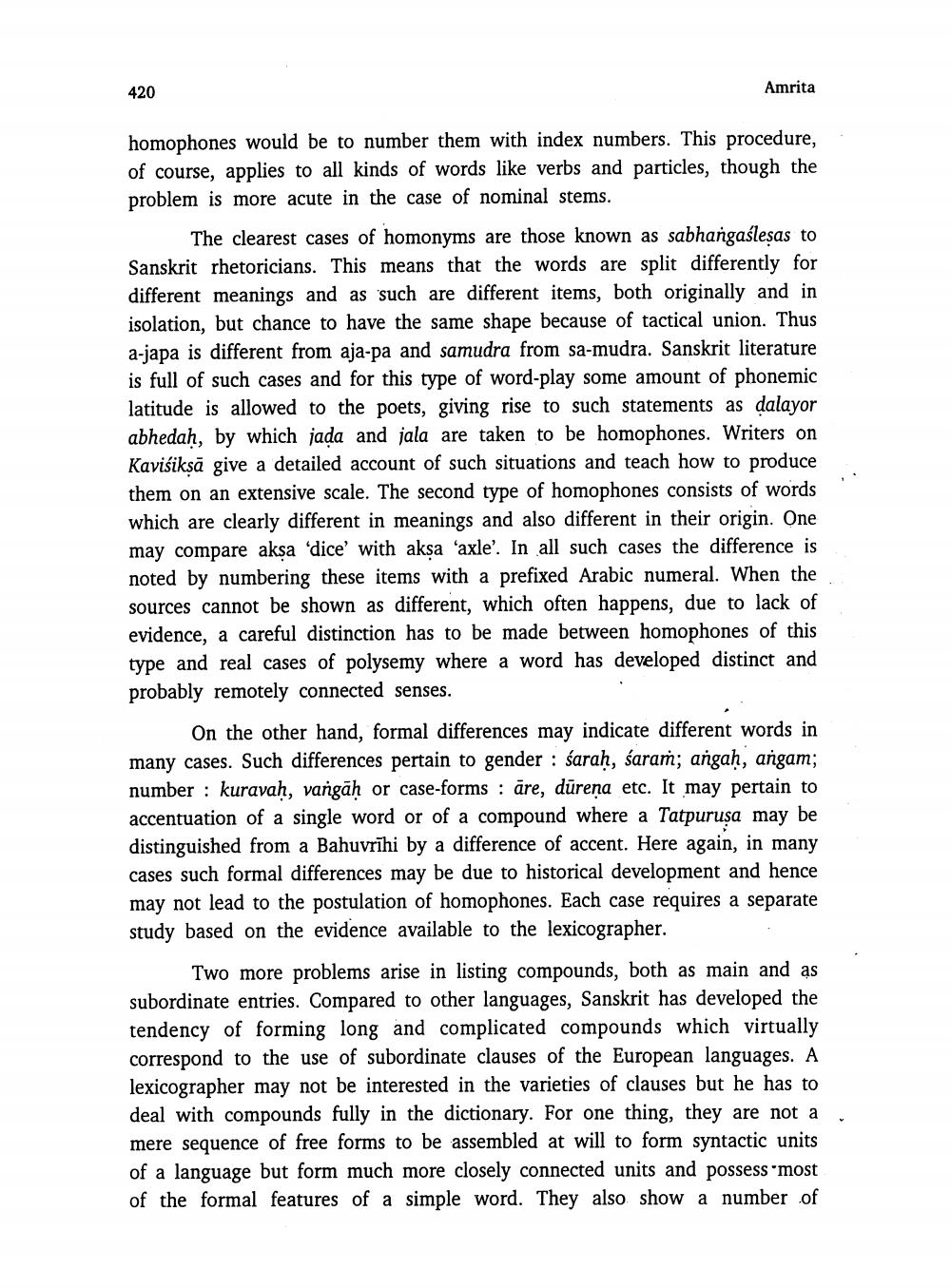________________
420
Amrita
homophones would be to number them with index numbers. This procedure, of course, applies to all kinds of words like verbs and particles, though the problem is more acute in the case of nominal stems.
The clearest cases of homonyms are those known as sabhangaślesas to Sanskrit rhetoricians. This means that the words are split differently for different meanings and as such are different items, both originally and in isolation, but chance to have the same shape because of tactical union. Thus a-japa is different from aja-pa and samudra from sa-mudra. Sanskrit literature is full of such cases and for this type of word-play some amount of phonemic latitude is allowed to the poets, giving rise to such statements as dalayor abhedah, by which jada and jala are taken to be homophones. Writers on Kavisiksā give a detailed account of such situations and teach how to produce them on an extensive scale. The second type of homophones consists of words which are clearly different in meanings and also different in their origin. One may compare akşa dice' with aksa ‘axle'. In all such cases the difference is noted by numbering these items with a prefixed Arabic numeral. When the sources cannot be shown as different, which often happens, due to lack of evidence, a careful distinction has to be made between homophones of this type and real cases of polysemy where a word has developed distinct and probably remotely connected senses.
On the other hand, formal differences may indicate different words in many cases. Such differences pertain to gender : śaraḥ, śaram; angaḥ, angam; number : kuravah, vangāh or case-forms : āre, dūrena etc. It may pertain to accentuation of a single word or of a compound where a Tatpurusa may be distinguished from a Bahuvrīhi by a difference of accent. Here again, in many cases such formal differences may be due to historical development and hence may not lead to the postulation of homophones. Each case requires a separate study based on the evidence available to the lexicographer.
Two more problems arise in listing compounds, both as main and as subordinate entries. Compared to other languages, Sanskrit has developed the tendency of forming long and complicated compounds which virtually correspond to the use of subordinate clauses of the European languages. A lexicographer may not be interested in the varieties of clauses but he has to deal with compounds fully in the dictionary. For one thing, they are not a mere sequence of free forms to be assembled at will to form syntactic units of a language but form much more closely connected units and possess most of the formal features of a simple word. They also show a number of




